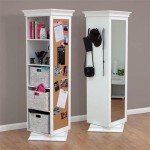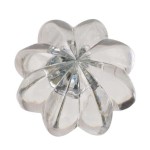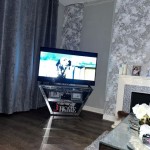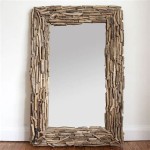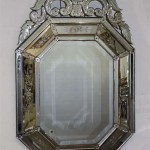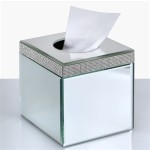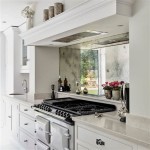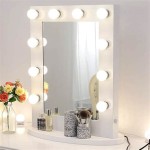Mirror Panels for Walls: A Comprehensive Guide
Mirror panels for walls offer a versatile and impactful way to transform interior spaces. From creating an illusion of spaciousness to adding a touch of elegance, these reflective surfaces can dramatically enhance a room's aesthetics and functionality. This article explores the various aspects of mirror panels, including their types, applications, installation methods, and maintenance.
Types of Mirror Panels
Several types of mirror panels cater to diverse design preferences and practical requirements. Understanding these variations allows for informed decisions based on specific needs and desired outcomes.
Acrylic Mirror Panels: Lightweight and shatter-resistant, acrylic mirrors offer a safer alternative to traditional glass, particularly in high-traffic areas or homes with children. They are also more flexible, allowing for curved installations. However, acrylic is more prone to scratching than glass.
Glass Mirror Panels: Offering superior reflectivity and a classic aesthetic, glass mirror panels remain a popular choice. They provide a crisp, clear reflection and are generally more resistant to scratches compared to acrylic. However, glass is heavier and more susceptible to breakage.
Tinted Mirror Panels: Available in various colors, tinted mirror panels add a decorative touch while offering the same reflective properties as traditional mirrors. These can be used to create a specific mood or complement existing color schemes.
Antique Mirror Panels: With their distressed finishes and unique patina, antique mirror panels introduce a vintage or rustic charm to a space. They can serve as a focal point and add a sense of history to a room's design.
Applications of Mirror Panels
The versatility of mirror panels extends to various applications in residential and commercial spaces. Their reflective properties provide both aesthetic and functional benefits.
Creating the Illusion of Space: Strategically placed mirror panels can make a small room appear larger by reflecting light and visually expanding the area. This is particularly effective in narrow hallways or compact apartments.
Enhancing Natural Light: Placing mirror panels opposite windows can amplify natural light, brightening a room and reducing the need for artificial illumination during the day. This creates a more welcoming and energy-efficient environment.
Installation Methods for Mirror Panels
Proper installation ensures the longevity and safety of mirror panels. Several methods cater to different panel types and wall surfaces.
Adhesive Mounting: Suitable for lighter mirror panels like acrylic, adhesive mounting provides a quick and relatively easy installation process. Specialized mirror adhesives ensure a secure bond to the wall.
Clips and Brackets: This method offers a more secure installation for heavier glass mirror panels. Clips and brackets hold the panel firmly against the wall while allowing for slight adjustments.
J-Channels: J-channels offer a concealed mounting solution, creating a seamless and polished look. These channels are typically used for larger mirror panels or when creating a mirrored wall.
Maintenance and Care
Maintaining the pristine appearance of mirror panels requires regular cleaning and care. Appropriate cleaning techniques prevent damage and ensure long-lasting reflectivity.
Regular Cleaning: Cleaning mirror panels with a glass cleaner and a soft microfiber cloth removes smudges and fingerprints, preserving their reflective quality.
Avoiding Abrasive Cleaners: Harsh chemicals and abrasive cleaning tools can scratch the surface of mirror panels, diminishing their reflectivity and aesthetic appeal.
Choosing the Right Mirror Panels
Selecting the appropriate mirror panels involves considering various factors, including the space's size, style, and intended purpose.
Size and Shape: Consider the dimensions of the wall and the desired visual impact when choosing the size and shape of the mirror panels. Larger panels create a more dramatic effect, while smaller panels can be used for accentuation.
Style and Design: The style of the mirror panels should complement the overall decor of the room. Consider factors like frame style, tint, and finish to create a cohesive look.
Benefits of Using Mirror Panels
Mirror panels offer a range of advantages that contribute to both the aesthetics and functionality of a space.
Cost-Effective Decor: Compared to other decorative wall treatments, mirror panels can provide a significant visual impact at a relatively affordable cost.
Increased Light Reflection: As mentioned earlier, mirror panels can enhance natural light, reducing the need for artificial lighting and contributing to energy savings.
Safety Considerations
While aesthetically pleasing and functional, certain safety precautions should be considered when installing and utilizing mirror panels.
Secure Installation: Ensure the panels are securely mounted to prevent accidental falls, especially in high-traffic areas. Follow manufacturer recommendations for proper installation techniques.
Handling and Transportation: Exercise caution when handling and transporting glass mirror panels to avoid breakage and potential injury. Use appropriate protective gear and packing materials.

Pvc And Mirror Wall Panels Rectangular Decorative Home Simple Sku Wbmr

Large Wall Panels Mirror Geometric Art Modern

Eagan Large Multipanel Wall Mirror 44 X 55 Pottery Barn

Dark Grey And Gold Mirror Decorative Panels 3d Wall Easy Installation Sku Ggss

Wall Mirror Design 8 Decorative Mirrors To Transform Your Home

15 Photogenic Feature Wall Designs That Can Make Your Home Stand Out Design Interior Mirror Decor Living Room

Antiqued Mirror Wall Panels Design Ideas

Mirror Wall Panels

Single Silver Teardrop Panel Mirror 6 25x58 75 Kirklands Home

10 Mirror Wall Panel Design Ideas Catalogue Know Cost Saving Tips

